Instruction
Adjust your setup and swing for better bunker shots
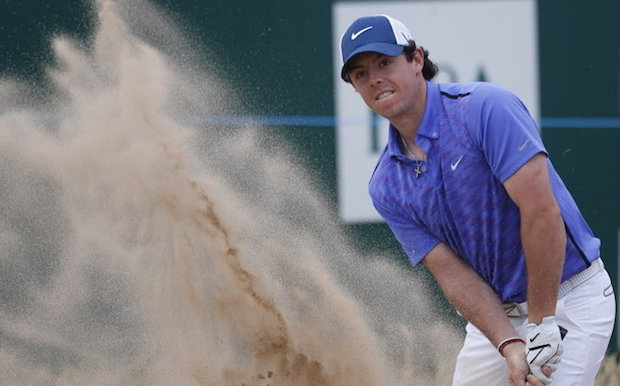
The easiest shot in golf should be a greenside bunker shot. I say that because golfers can be much less exacting from the sand than other lies. A bunker shot can be hit anywhere from 0.5 inches to 1.5 inches behind the ball and the shot can still work. Imagine if golfers had that margin of error from the fairway!
Even so, bunker shots aren’t that easy for most golfers, because the vast majority still dread being in the sand. Professionals, however, prefer the sand to shots from the tall grass around the green because the outcome is usually much more predictable.
Do you want to look forward to bunker shots like the pros? First, we should discuss the golf club. The sand wedge was first conceived by the great Gene Sarazen some 80 years ago. It is unique in that it has a “flange” on the bottom where the trailing edge is lower than the leading edge. That part of the golf club is called the “bounce angle,” which is the angle from the trailing edge to the leading edge of the club.
Place a sand wedge on a table in front of you at eye level (as I did above) and you will see the angle I’m describing. Depending on your make and model of wedge, that angle can vary considerably. The width of the flange is another consideration. For example, if you have a wedge with 12 degrees of bounce with a 0.5-inch inch sole, its leading edge will rest considerably closer to the ground than a wedge of the same bounce with a 1-inch sole.
Keep this guide in mind when choosing your tool for the sand:
- Do you play courses with fluffy, loose sand? You need more bounce, perhaps 14 degrees or so.
- Do you play course with firmer, tightly packed sand? You might need less bounce, perhaps about 8 degrees or so.
Remember the leading edge can be the enemy of bunker play, and bounce is your friend. There are a lot of great resources on the web to help you learn more about wedge design and find the right sand wedge, such as Vokey.com’s Wedge Glossary and Tour Grinds Comparisons, and I recommend that you learn more about wedges before you purchase a new one. As for loft, I recommend at least 55 degrees. But this article is about bunker play, so let’s move on.
The Setup
Posture: Think about this for a minute. If a golfer is trying to hit a ball resting in the grass with ball first contact, and then tries to hit another shot from the sand an inch behind the ball, can the setup be the same? The answer is absolutely not.
To impact the ground an inch or so behind the ball, a golfers has to lower his or her swing center. How is it done? First, take your normal stance. Now widen your stance considerably to create a stance width that is well outside your shoulders. What’s different? Well, the added stance width moved you closer to the ground, so if you’re trying to hit the sand and not the ball first, you just took a big step in the right direction.
Need to lower your swing center even more? Stick your butt out, which also gets you lower. But there’s an exception to all of this. Those of you taking huge divots on the grass likely don’t need to lower your swing center in a bunker. It seems that you’re already going to find plenty of sand.
Ball position: Here’s an easy way to understand the proper ball position in a bunker: Is the greenside bunker shot a high shot or a low one? It’s a high one, of course. Anytime golfers want to hit a high shot, they move the golf ball forward in their stance and a bunker shot is no exception.
Here’s a note of caution, however, for golfers who have an out-to-in swing path. They shouldn’t move the ball forward in their stance. That can make you more out to it and make it harder to find sand behind the ball, the main cause of bunker shots that fly 10, 20 or more yards over the green.
Grip: A bunker shot is one of the few times that it may help golfers to actually weaken their grip. That’s because loft is a golfers best friend when they’re in the bunker, and many good players weaken their grip for this shot to keep the club face open through impact. Not everyone should weaken their grip, and it’s a particularly bad idea for slicers; but if you’re are having trouble hitting your bunker shots high enough give it a try. Otherwise, your normal grip is fine.
Alignment: Bunker shot alignment is a very personal thing and varies from golfer to golfer, even with good bunker players. Often, golfers read about opening their club face and aiming left when they’re in a bunker. But I am suggesting that if you have a problem with slicing the ball (from an out-to-in swing path) that you should not open your club face or stance very much.
It’s true that opening the club face usually adds bounce to a club, giving it a better chance to work through the sand, but if you’re a slicer you already have an open face relative to your path at impact. And since you already have an out-to-in path, why would you want to set up more open? That will cause you to swing even more out to in.
The Swing
Let’s consider two scenarios: Golfers who hook the ball in their full swing, and those who slice the ball.
Generally, golfers who hook the ball tend to have shallow attack angles. To become better bunker players, they might consider:
- Taking a wider stance.
- Sticking their rear end out more.
- Putting most of their weight on their lead side.
- Opening their club face and their stance.
- Picking the club up abruptly in the backswing, creating a very early wrist set.
- Feeling as though they have “high hands” in their backswing
- Following through more, which helps get even more of their weight on their left side.
Generally golfers who slice the ball tend to have steep attack angles. To become better bunker players, they might consider:
- Setting up square to their target.
- Having a slightly open to square club face at address.
- Centering their weight at address.
- Standing a little more upright at address.
- Feeling a slight shoulder turn in their backswing.
- Feeling that their downswing is coming more from the inside.
- Releasing the club earlier.
Again, slicers tend come into the ball from the outside and fairly steeply. Those who hook the ball tend to come from the inside, and have an angle of attack that is more shallow. Think about that in terms of what I’ve written above and you’ll start to see why there is a difference.
Teaching bunker play without seeing an individual’s swing is nearly impossible. Too often teachers see great players giving bunker lessons telling people what they do to hit good bunker shots. That’s well and good, but a 20-handicap likely doesn’t have the skills of that good player and is just trying to extract the ball from the cat box!
—
If you have are having trouble in the bunker, I’m here to help. Post a video of your bunker swing to my Facebook page and I’ll do my best to give you my feedback. You can even post a video of your full swing, because I can tell a lot about your bunker game by how you hit full shots. Give my page a like while you’re there, too.
Instruction
The Wedge Guy: Beating the yips into submission

There may be no more painful affliction in golf than the “yips” – those uncontrollable and maddening little nervous twitches that prevent you from making a decent stroke on short putts. If you’ve never had them, consider yourself very fortunate (or possibly just very young). But I can assure you that when your most treacherous and feared golf shot is not the 195 yard approach over water with a quartering headwind…not the extra tight fairway with water left and sand right…not the soft bunker shot to a downhill pin with water on the other side…No, when your most feared shot is the remaining 2- 4-foot putt after hitting a great approach, recovery or lag putt, it makes the game almost painful.
And I’ve been fighting the yips (again) for a while now. It’s a recurring nightmare that has haunted me most of my adult life. I even had the yips when I was in my 20s, but I’ve beat them into submission off and on most of my adult life. But just recently, that nasty virus came to life once again. My lag putting has been very good, but when I get over one of those “you should make this” length putts, the entire nervous system seems to go haywire. I make great practice strokes, and then the most pitiful short-stroke or jab at the ball you can imagine. Sheesh.
But I’m a traditionalist, and do not look toward the long putter, belly putter, cross-hand, claw or other variation as the solution. My approach is to beat those damn yips into submission some other way. Here’s what I’m doing that is working pretty well, and I offer it to all of you who might have a similar affliction on the greens.
When you are over a short putt, forget the practice strokes…you want your natural eye-hand coordination to be unhindered by mechanics. Address your putt and take a good look at the hole, and back to the putter to ensure good alignment. Lighten your right hand grip on the putter and make sure that only the fingertips are in contact with the grip, to prevent you from getting to tight.
Then, take a long, long look at the hole to fill your entire mind and senses with the target. When you bring your head/eyes back to the ball, try to make a smooth, immediate move right into your backstroke — not even a second pause — and then let your hands and putter track right back together right back to where you were looking — the HOLE! Seeing the putter make contact with the ball, preferably even the forward edge of the ball – the side near the hole.
For me, this is working, but I am asking all of you to chime in with your own “home remedies” for the most aggravating and senseless of all golf maladies. It never hurts to have more to fall back on!
Instruction
Looking for a good golf instructor? Use this checklist

Over the last couple of decades, golf has become much more science-based. We measure swing speed, smash factor, angle of attack, strokes gained, and many other metrics that can really help golfers improve. But I often wonder if the advancement of golf’s “hard” sciences comes at the expense of the “soft” sciences.
Take, for example, golf instruction. Good golf instruction requires understanding swing mechanics and ball flight. But let’s take that as a given for PGA instructors. The other factors that make an instructor effective can be evaluated by social science, rather than launch monitors.
If you are a recreational golfer looking for a golf instructor, here are my top three points to consider.
1. Cultural mindset
What is “cultural mindset? To social scientists, it means whether a culture of genius or a culture of learning exists. In a golf instruction context, that may mean whether the teacher communicates a message that golf ability is something innate (you either have it or you don’t), or whether golf ability is something that can be learned. You want the latter!
It may sound obvious to suggest that you find a golf instructor who thinks you can improve, but my research suggests that it isn’t a given. In a large sample study of golf instructors, I found that when it came to recreational golfers, there was a wide range of belief systems. Some instructors strongly believed recreational golfers could improve through lessons. while others strongly believed they could not. And those beliefs manifested in the instructor’s feedback given to a student and the culture created for players.
2. Coping and self-modeling can beat role-modeling
Swing analysis technology is often preloaded with swings of PGA and LPGA Tour players. The swings of elite players are intended to be used for comparative purposes with golfers taking lessons. What social science tells us is that for novice and non-expert golfers, comparing swings to tour professionals can have the opposite effect of that intended. If you fit into the novice or non-expert category of golfer, you will learn more and be more motivated to change if you see yourself making a ‘better’ swing (self-modeling) or seeing your swing compared to a similar other (a coping model). Stay away from instructors who want to compare your swing with that of a tour player.
3. Learning theory basics
It is not a sexy selling point, but learning is a process, and that process is incremental – particularly for recreational adult players. Social science helps us understand this element of golf instruction. A good instructor will take learning slowly. He or she will give you just about enough information that challenges you, but is still manageable. The artful instructor will take time to decide what that one or two learning points are before jumping in to make full-scale swing changes. If the instructor moves too fast, you will probably leave the lesson with an arm’s length of swing thoughts and not really know which to focus on.
As an instructor, I develop a priority list of changes I want to make in a player’s technique. We then patiently and gradually work through that list. Beware of instructors who give you more than you can chew.
So if you are in the market for golf instruction, I encourage you to look beyond the X’s and O’s to find the right match!
Instruction
What Lottie Woad’s stunning debut win teaches every golfer

Most pros take months, even years, to win their first tournament. Lottie Woad needed exactly four days.
The 21-year-old from Surrey shot 21-under 267 at Dundonald Links to win the ISPS Handa Women’s Scottish Open by three shots — in her very first event as a professional. She’s only the third player in LPGA history to accomplish this feat, joining Rose Zhang (2023) and Beverly Hanson (1951).
But here’s what caught my attention as a coach: Woad didn’t win through miraculous putting or bombing 300-yard drives. She won through relentless precision and unshakeable composure. After watching her performance unfold, I’m convinced every golfer — from weekend warriors to scratch players — can steal pages from her playbook.
Precision Beats Power (And It’s Not Even Close)
Forget the driving contests. Woad proved that finding greens matters more than finding distance.
What Woad did:
• Hit it straight, hit it solid, give yourself chances
• Aimed for the fat parts of greens instead of chasing pins
• Let her putting do the talking after hitting safe targets
• As she said, “Everyone was chasing me today, and managed to maintain the lead and played really nicely down the stretch and hit a lot of good shots”
Why most golfers mess this up:
• They see a pin tucked behind a bunker and grab one more club to “go right at it”
• Distance becomes more important than accuracy
• They try to be heroic instead of smart
ACTION ITEM: For your next 10 rounds, aim for the center of every green regardless of pin position. Track your greens in regulation and watch your scores drop before your swing changes.
The Putter That Stayed Cool Under Fire
Woad started the final round two shots clear and immediately applied pressure with birdies at the 2nd and 3rd holes. When South Korea’s Hyo Joo Kim mounted a charge and reached 20-under with a birdie at the 14th, Woad didn’t panic.
How she responded to pressure:
• Fired back with consecutive birdies at the 13th and 14th
• Watched Kim stumble with back-to-back bogeys
• Capped it with her fifth birdie of the day at the par-5 18th
• Stayed patient when others pressed, pressed when others cracked
What amateurs do wrong:
• Get conservative when they should be aggressive
• Try to force magic when steady play would win
• Panic when someone else makes a move
ACTION ITEM: Practice your 3-6 foot putts for 15 minutes after every range session. Woad’s putting wasn’t spectacular—it was reliable. Make the putts you should make.
Course Management 101: Play Your Game, Not the Course’s Game
Woad admitted she couldn’t see many scoreboards during the final round, but it didn’t matter. She stuck to her game plan regardless of what others were doing.
Her mental approach:
• Focused on her process, not the competition
• Drew on past pressure situations (Augusta National Women’s Amateur win)
• As she said, “That was the biggest tournament I played in at the time and was kind of my big win. So definitely felt the pressure of it more there, and I felt like all those experiences helped me with this”
Her physical execution:
• 270-yard drives (nothing flashy)
• Methodical iron play
• Steady putting
• Everything effective, nothing spectacular
ACTION ITEM: Create a yardage book for your home course. Know your distances to every pin, every hazard, every landing area. Stick to your plan no matter what your playing partners are doing.
Mental Toughness Isn’t Born, It’s Built
The most impressive part of Woad’s win? She genuinely didn’t expect it: “I definitely wasn’t expecting to win my first event as a pro, but I knew I was playing well, and I was hoping to contend.”
Her winning mindset:
• Didn’t put winning pressure on herself
• Focused on playing well and contending
• Made winning a byproduct of a good process
• Built confidence through recent experiences:
- Won the Women’s Irish Open as an amateur
- Missed a playoff by one shot at the Evian Championship
- Each experience prepared her for the next
What this means for you:
• Stop trying to shoot career rounds every time you tee up
• Focus on executing your pre-shot routine
• Commit to every shot
• Stay present in the moment
ACTION ITEM: Before each round, set process goals instead of score goals. Example: “I will take three practice swings before every shot” or “I will pick a specific target for every shot.” Let your score be the result, not the focus.
The Real Lesson
Woad collected $300,000 for her first professional victory, but the real prize was proving that fundamentals still work at golf’s highest level. She didn’t reinvent the game — she simply executed the basics better than everyone else that week.
The fundamentals that won:
• Hit more fairways
• Find more greens
• Make the putts you should make
• Stay patient under pressure
That’s something every golfer can do, regardless of handicap. Lottie Woad just showed us it’s still the winning formula.
FINAL ACTION ITEM: Pick one of the four action items above and commit to it for the next month. Master one fundamental before moving to the next. That’s how champions are built.
PGA Professional Brendon Elliott is an award-winning coach and golf writer. You can check out his writing work and learn more about him by visiting BEAGOLFER.golf and OneMoreRollGolf.com. Also, check out “The Starter” on RG.org each Monday.
Editor’s note: Brendon shares his nearly 30 years of experience in the game with GolfWRX readers through his ongoing tip series. He looks forward to providing valuable insights and advice to help golfers improve their game. Stay tuned for more Tips!


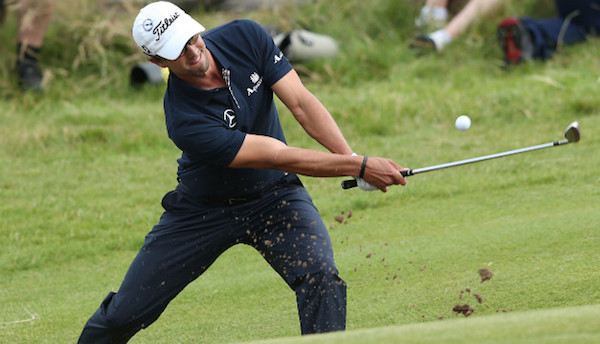




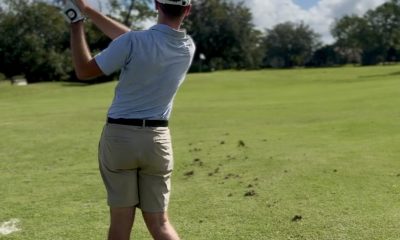





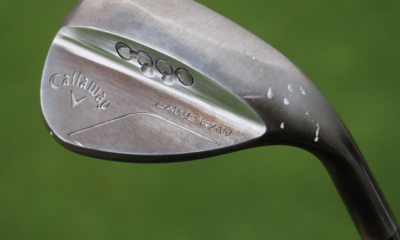

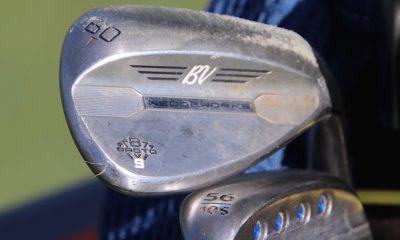









Winmac
Mar 8, 2014 at 10:23 pm
If you reverse pivot yourself in the bunker, you will likely hit a fat on fairways but in sand, it will work great.
Or just do a normal pitch shot, but collapse your right knee on downswing. That will make you hit behind the ball and make that bunker shot.
SN
Mar 6, 2014 at 10:15 pm
Thanks for a great article.
My worst enemy in bunker play is info-overload mind, though.
Lately I just have one swing thought, “Believe in the bounce (angle)”
Dennis Clark
Mar 7, 2014 at 8:37 am
Thats a good thought…speed might be another.
Dennis Clark
Mar 6, 2014 at 2:31 pm
you’re welcome; steep is the key and shallow is the enemy. If you have anything like an ascending angle, sand is tough!
Philip
Mar 6, 2014 at 2:09 pm
Thanks for a brilliant look at cause and effect on bunker play from different angles. This helps to explain why when I went from tending to fade/slice last season to drawing/hooking while trying to improve my swing that I suddenly started to struggle in the sand. I was at a loss as to why I was occasionally thinning bunker shots and in spite of my continued progress with my swing, I was nervous thinking about what to do this season. I’ll be marking this article for study and review later.
Once again, thanks!